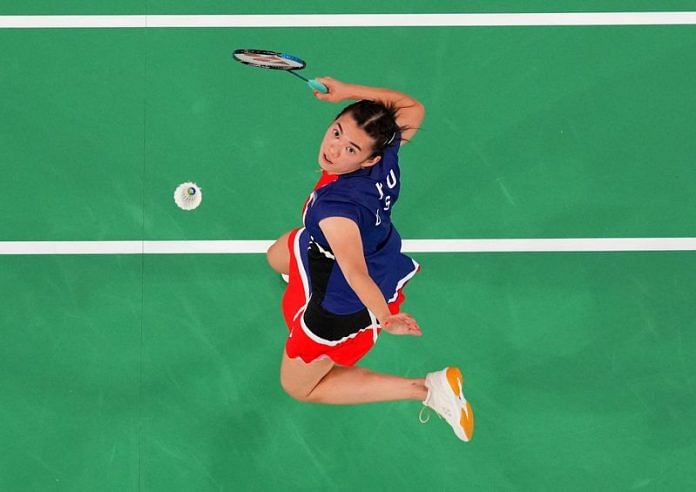By Richa Naidu
PARIS (Reuters) – For elite athletes to perform at their highest levels, they need to adapt.
Runners must to learn how to sprint on wet track, surfers have to deal with uncertain currents, and tennis players have to learn how to switch between grass, clay and hardcourts.
The challenge for badminton players is learning how to predict the effect of wind, or ‘drift’, on the shuttlecock.
The shuttlecock, or birdie, with its open cone of goose feathers embedded in a rounded cork base, usually weighs about five grams and has feathers shorter than 70 millimetres.
Hundreds of tiny variables can affect how true it flies, from fans opening the doors to arenas, to the body temperatures of spectators and the air-conditioning and size of the hall.
“In badminton you have to be so precise and top players adapt quickly,” said Charmaine Reid, who competed at the Athens Games in 2004.
“Some people like to start on the side where the wind comes towards them, some people like to start on the side where the wind is behind them.”
If the wind is behind a player, they have to ‘lift’ the shuttlecock higher so it does not go out of the court.
‘Faster’ wind can also increase the speed generated by a smash, which can reach as high as 500km per hour.
At the Olympics, when the stakes are higher than ever, understanding an arena’s unique drift and adjusting tactics quickly can make the difference between medalling or not, even if a shuttler is otherwise top-notch.
American shuttlers Annie and Kerry Xu were knocked out in the group stage by Bulgaria’s Stoeva sisters partly because they had not mastered the Port de La Chapelle arena’s unique drift.
“Unfortunately, in the second game we had a little bit of trouble with a drift and had a hard time controlling our shots,” Kerry said after the match.
On the other hand, Japanese veteran Akane Yamaguchi, fifth in the world in women’s singles, said she managed to use a better drift to her advantage in her group stage match with Canada’s Michelle Li.
A hall the size of the Port de La Chapelle in Paris would always have a certain amount of drift, said Ian Wright, the Badminton World Federation’s director of development, who oversees the sport’s science and research division.
“When you start at the beginning of the day, normally the temperature of the hall will be slightly lower, so the shuttles fly slightly slower. As it warms up when you’ve got a full audience, the shuttle will get slightly quicker,” he added.
“But elite players adapt to it very, very quickly and it impacts tactics from one side to the other.”
(Reporting by Richa Naidu; Editing by Simon Jennings and Christian Radnedge)
Disclaimer: This report is auto generated from the Reuters news service. ThePrint holds no responsibilty for its content.



